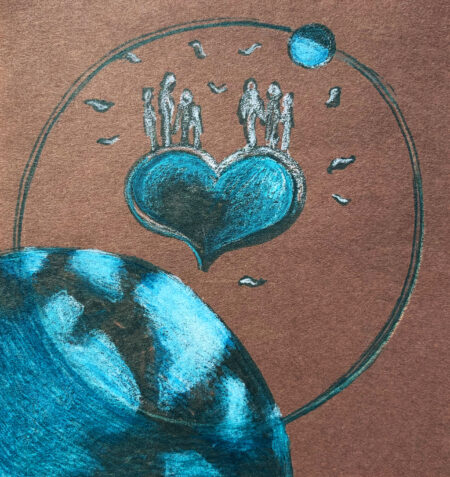Like many of you, we have lots of opinions on the escalating violence, war, and the state of world, but, at the risk of being glib, we’re just going to whittle it down to one simple thought:
“The more different we believe we are from others, the more alike we turn out to be and the more alike we think we are, the more differences we turn out to have.”
What We Can Forgive and What We Cannot
That probably sounds reductionistic, and it is. Most of us have very complex and conflicting beliefs about what’s happening around the world and in our backyards right now. And, because they are grounded in fundamental ideas about right and wrong, we cannot understand how others who don’t agree with us can be so misguided. At best, they must be misinformed—this we might be able to forgive. But not when it looks like overt malice, or worse, pure evil—that we cannot.
Everyone Has Values
To be sure, we agree that there is evil out there, and some people exemplify it on all sides of these issues. But most people are not evil or immoral. Almost everyone has values they believe to be righteous and true. So how do we end up so polarized and divided and what do we do about it?
How To Counter Dehumanization
We have some ideas about that, based upon our work with countering violent extremism. The first thing we need to do is stop othering others. Sadly it is much easier to dehumanize people who we think are different and/or wrong. Our minds default to this naturally. It is much harder to rehumanize them. This requires conscious effort.
How to Rehumanize/First some assumptions:
- This may sound ridiculous but consider it anyway—Do not believe your mind. As Rebecca’s husband is fond of saying “We perceive what we believe” not the other way around. Our unconscious minds cherry-pick information from our environment to “confirm” our beliefs and ignore shocking amounts of information because it doesn’t just fit in that scheme.
- Our minds also have a negativity bias that spotlights problems and skims over everything else.
- Social media and news outlets (on all sides) do the same and worse. They give us just slivers of the whole picture—a small glimpse that only presents conflicts, polarizes them, and invariably paints others who don’t share our beliefs as ignorant and evil.
- Our minds are wired to perceive that people who look different are a threat.
- Our minds do not naturally see past the external shell of others into who they really are. We get stuck on the surface.
- Most people have reasons for doing what they are doing that come from what they think is most important in their lives and the lives of others.
- Most people have deeply rooted values.
- Everyone is capable of doing terrible things if/when they believe that others are evil.
So how we change our minds? This is just a quick list off the top of our head:
- Find ways to see into and beneath the exterior shell we encounter with others (listen to who they are and where they come from, look for signs of what matters to them, ask them what matters to them, find common ground, ask for their stories).
- Do things that give you positive emotions—kindness, humor, photos, animals, nature—to shift yourself into a positive state and to do the same for others. It opens your mind and theirs. It will automatically make you more receptive and feel more connected.
- Notice yourself more (mindfulness) so you know when you are in a reactive state.
- Manage reactive states so that when we have differences our first response is not to attack but to be more receptive and curious.
- Find out what people value (go here for a list of values that you can use).
- Find out what they need (go here for a list of needs).
- Startle your mind. When you feel tension because of fundamental idealogical or cultural differences arise, righteous anger and justified violence is automatic and the easy way out. Do something different that switches the script.
- Get out of your default modes of reacting and thinking. They are doing you no favors.
- Limit social media and news outlets. They are also not your friends.
- Meet other people, be with other people.
- Don’t listen to words, use other “language” like art, music, and movement to see something new and different about who they really are. You will be surprised by your similarities and appreciative of your differences.
- Change your mind, not theirs.
The More Alike the More Different
To give the simplest illustration of the last suggestion and the idea that “the more alike we are the more different,” we give the example of Rebecca and her twin sister Jenny. They are literally genetically identical and yet the two fight like cats and dogs because, being twins, they expect to be on the same page with each other. Especially when it comes to what they believe about their relationship, what they think is important, how they communicate, and what they value.


Art Says It So Much Better Than Words Ever Could
Although they are lots of things that Rebecca and Jenny can do to improve their communication, e.g., using the list above, the first step is just to recognize and acknowledge they are different people. Words can capture that to some degree but artwork is so much more efficient. In a flash, you can see the differences and the similarities between the two.
They both have water and waves and both have a small circle in the sky, but they are totally different. Jenny’s is a hot sun and Rebecca’s a cool moon. Jenny’s is made of quick, energetic marks and Rebecca’s is drawn slowly with heavy marks. Jenny’s has complementary hot orange in the sky and cool blue for the water. Rebecca’s is just a cool deep blue against the earthy brown. Jenny’s has an energetic dolphin bouncing in the waves. Rebecca’s has ghostly figures floating through the water. And so on…
Starting Small
We are not suggesting that simple exercises like the one above will fix the overwhelming challenges we humans seem to have with truly seeing each other, especially on a global scale. But to that point, we suggest that it begin with our relationships with the people around us—
with our loved ones, with our co-workers, and with strangers that we encounter. Dehumanization requires no effort because it is unconscious and our default. Rehumanization is a muscle that must be built and it will require tools that shake up our minds. So start now.
Join us
In committing to actions that will disrupt our defaults, give us ways to think outside of the box, move away from violence, see each other with more humanity, and move toward love.
